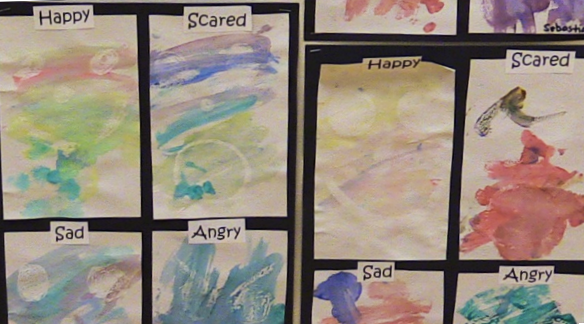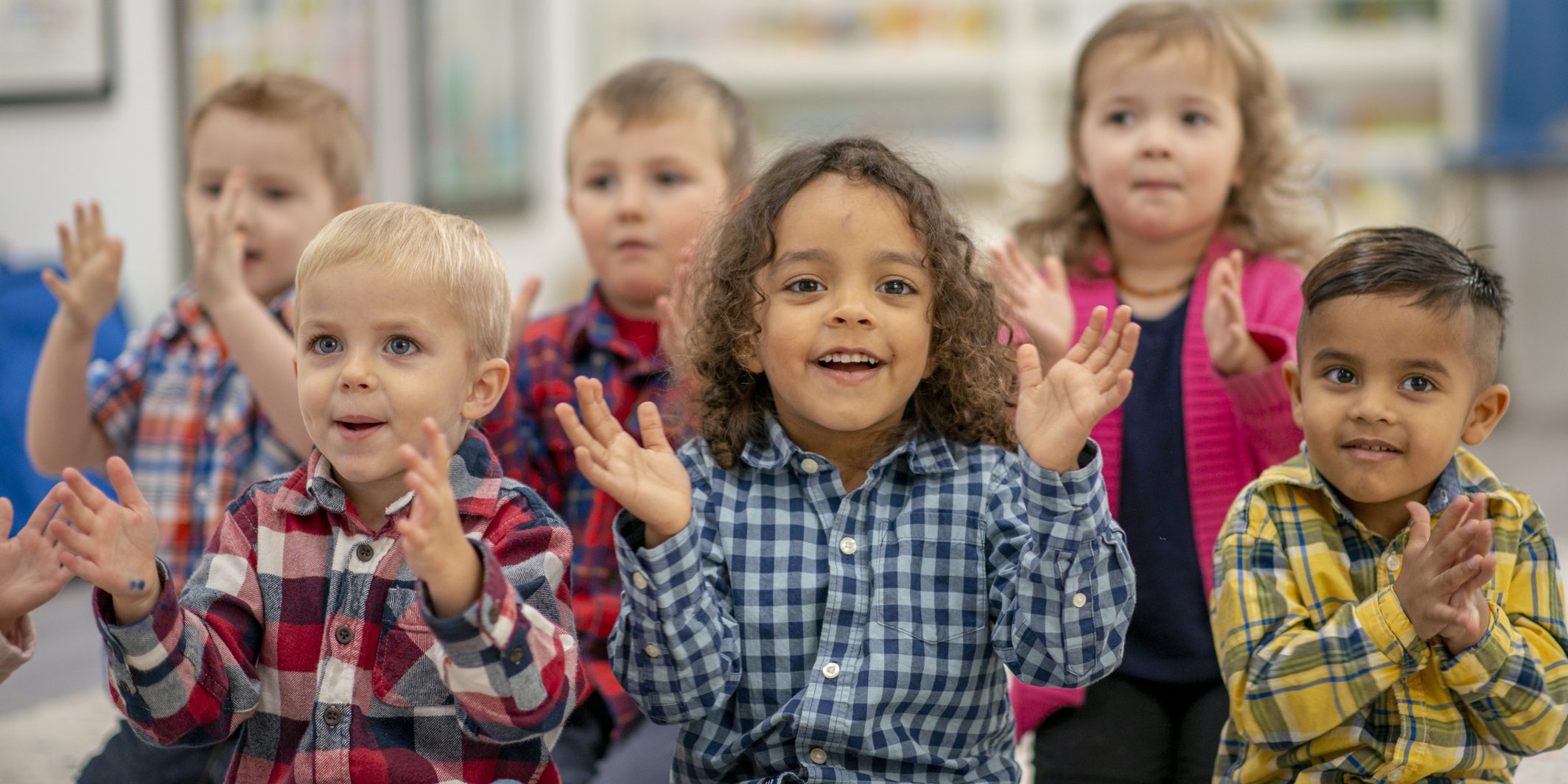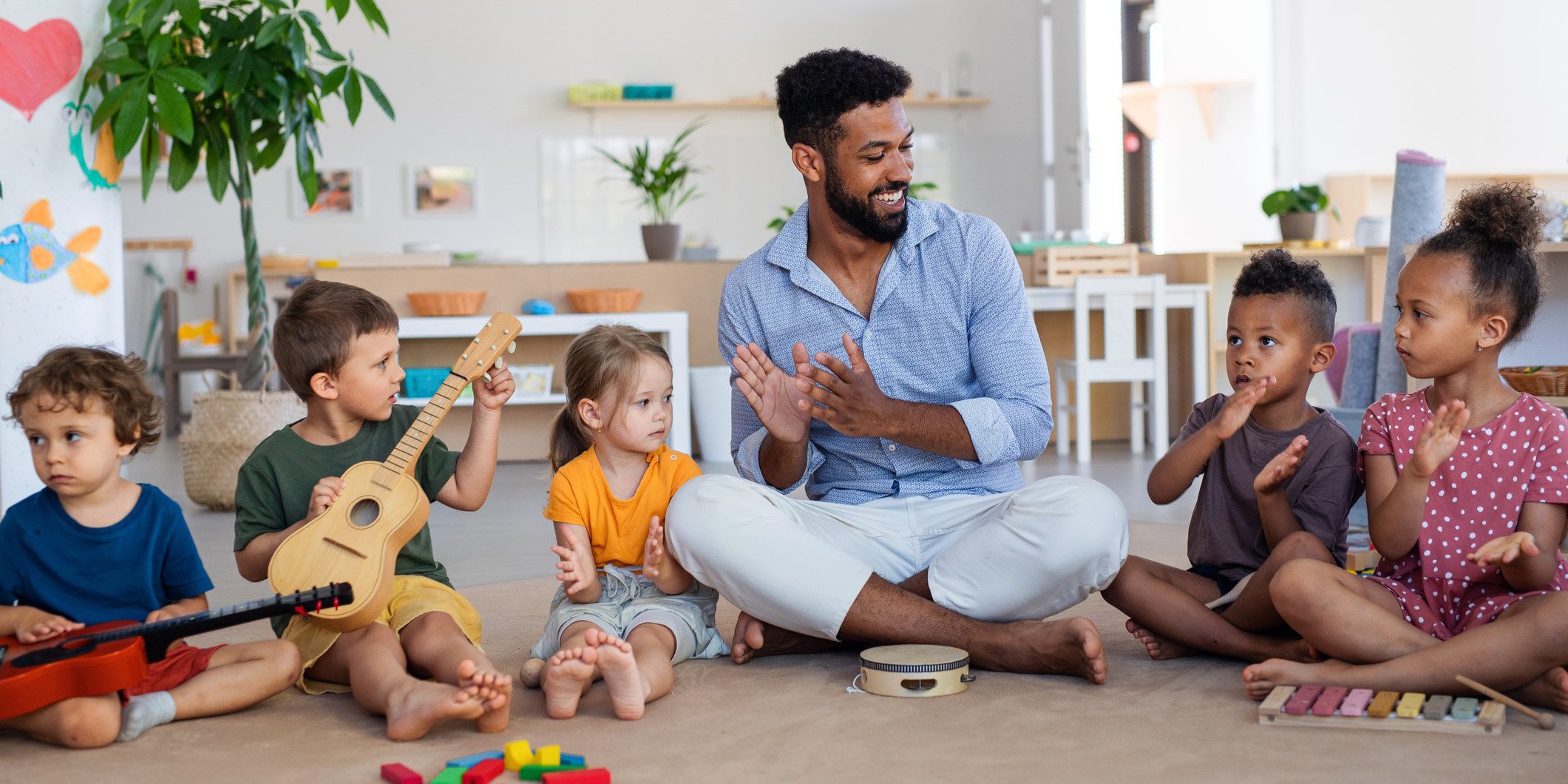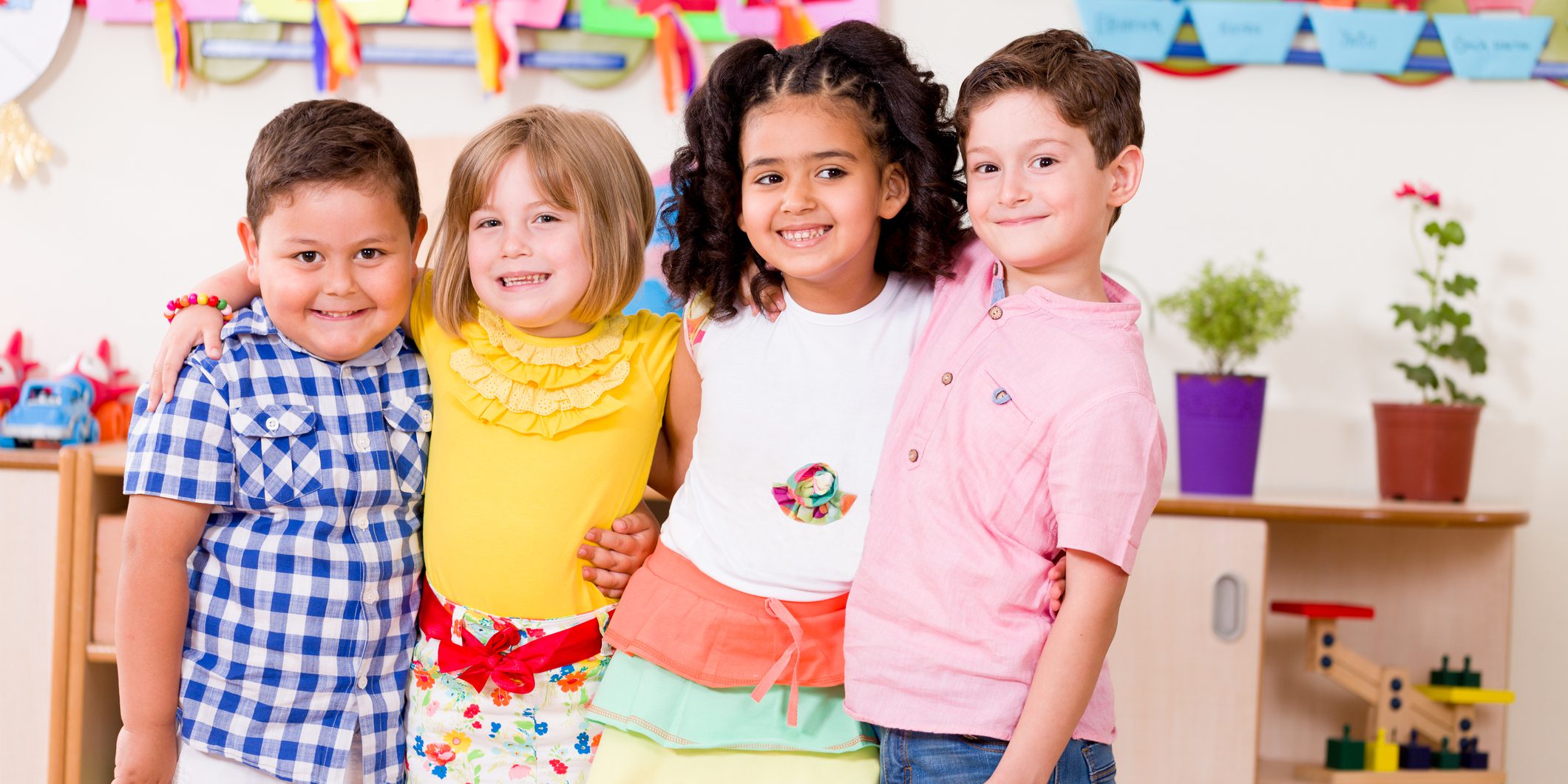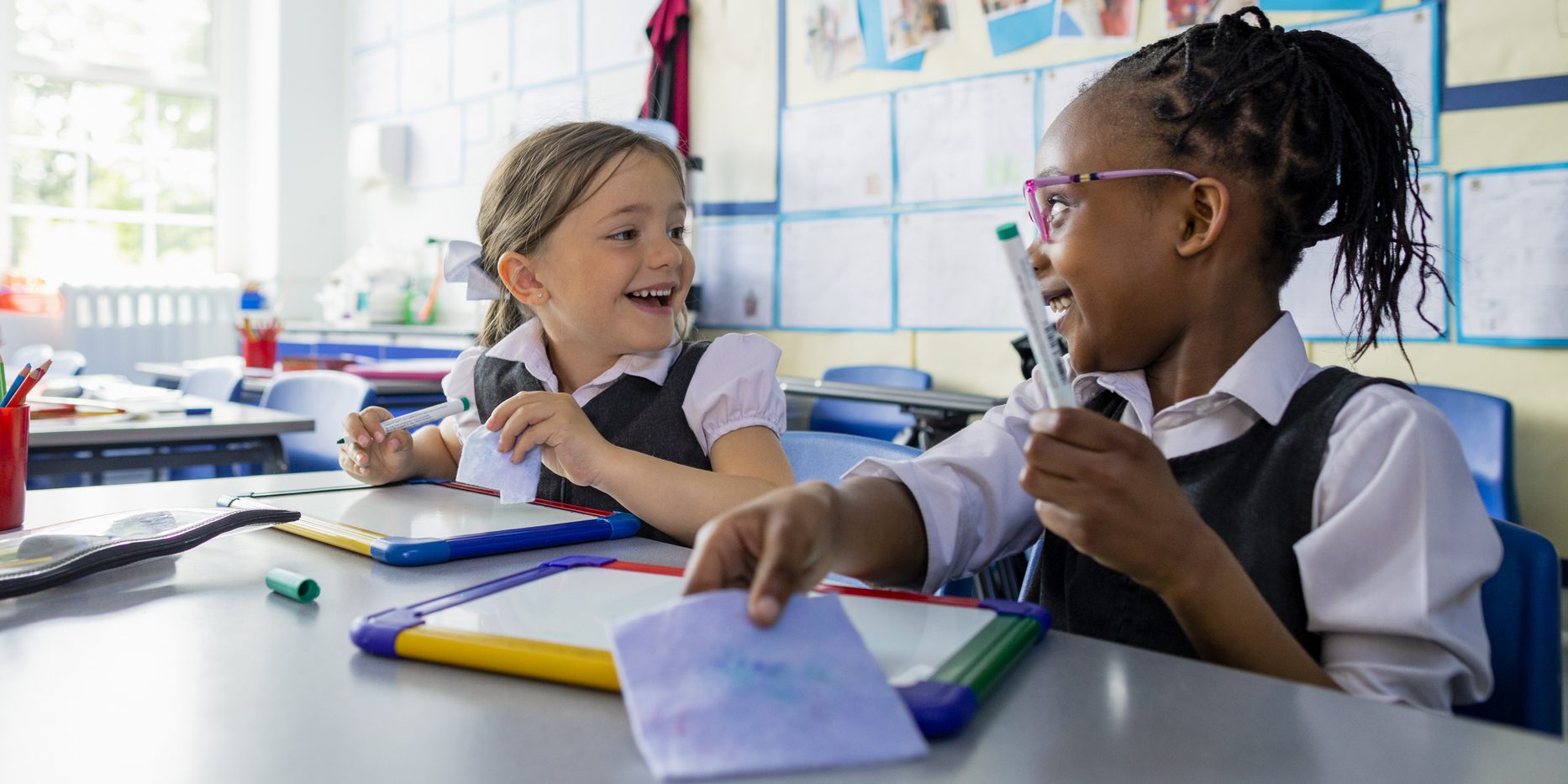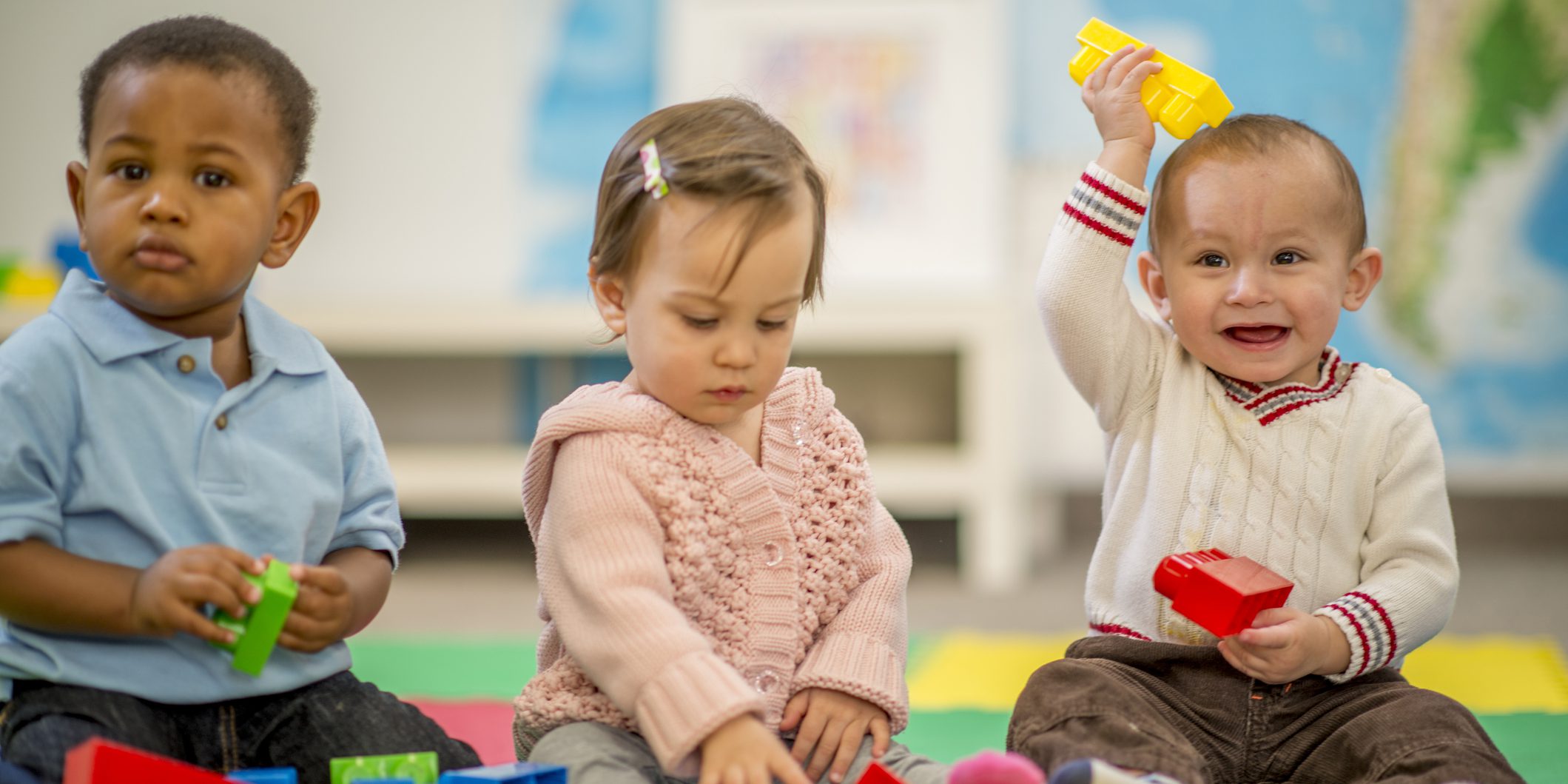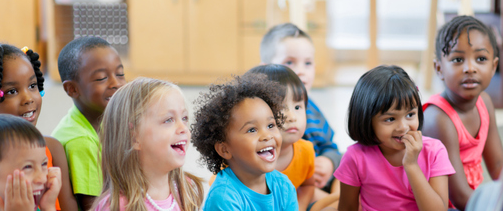This measure refers to developmentally appropriate teacher-and-child-created materials that should be displayed at the children’s eye level. These include learning posters, teacher-created materials, artwork, and realistic photos of people, places, and things. Most materials inside the classroom or center must be displayed at the children’s eye level versus those displayed above eye level.
Category: Category 4: Indoor and Outdoor Learning Environments
Subcategory: Indoor Learning Environment
Examples
In this section you will find videos, images, and/or documents that can be used to better understand this measure. These examples can also be used in conversations between mentors, directors, and/or teachers to discuss how the program's current practices compare to these examples.
Photo Example
This photo shows a display of toddlers’ artwork along with photographs of the children engaging in the original art activity. Notice that the artwork is displayed at children’s eye level, grouped for each child, and includes labels for the different emotion words.
Age(s): Toddler
Photo Example
Displaying family photographs at eye level is a great way to help children feel connected to their classroom and promote language and conversation. Notice how this infant room has family photos taped to the floor, where they are more easily seen by infants who aren’t yet standing.
Age(s): Infant
Photo Example
In this home-based example, the provider has displayed realistic pictures of people and animals and recent artwork at children’s eye level.
Age(s): Infant, Toddler, Preschool, School-age
Photo Example
This photograph shows an infant classroom with children’s artwork and realistic photos displayed at children’s eye level.
Age(s): Infant
Photo Example
This photo shows a preschool classroom that displays children’s artwork and pictures of realistic animals at children’s eye level. Notice how the artwork and the photos are organized in visual groupings.
Age(s): Preschool
Photo Example
This photo shows a school-age classroom with a variety of children’s artwork, posters, teacher-made displays, and realistic photos.
Age(s): Preschool, School-age
Photo Example
This photo shows toddler classrooms rich with displays of children’s artwork and realistic photos of familiar people and places, all posted a children’s eye level. These displays help children feel pride in their work, feel connected to their classroom, and promote language and conversation.
Age(s): Toddler
Photo Example
These books feature realistic pictures of familiar people, places, and objects. Displaying these books at children’s eye level ensures they can engage with them.
Age(s): Toddler
Photo Example
This example of a simple daily schedule includes realistic photographs of children at each timepoint across the day. The photos and the placement of the schedule at children’s eye level help children know what to expect in the daily routine.
Age(s): Toddler

